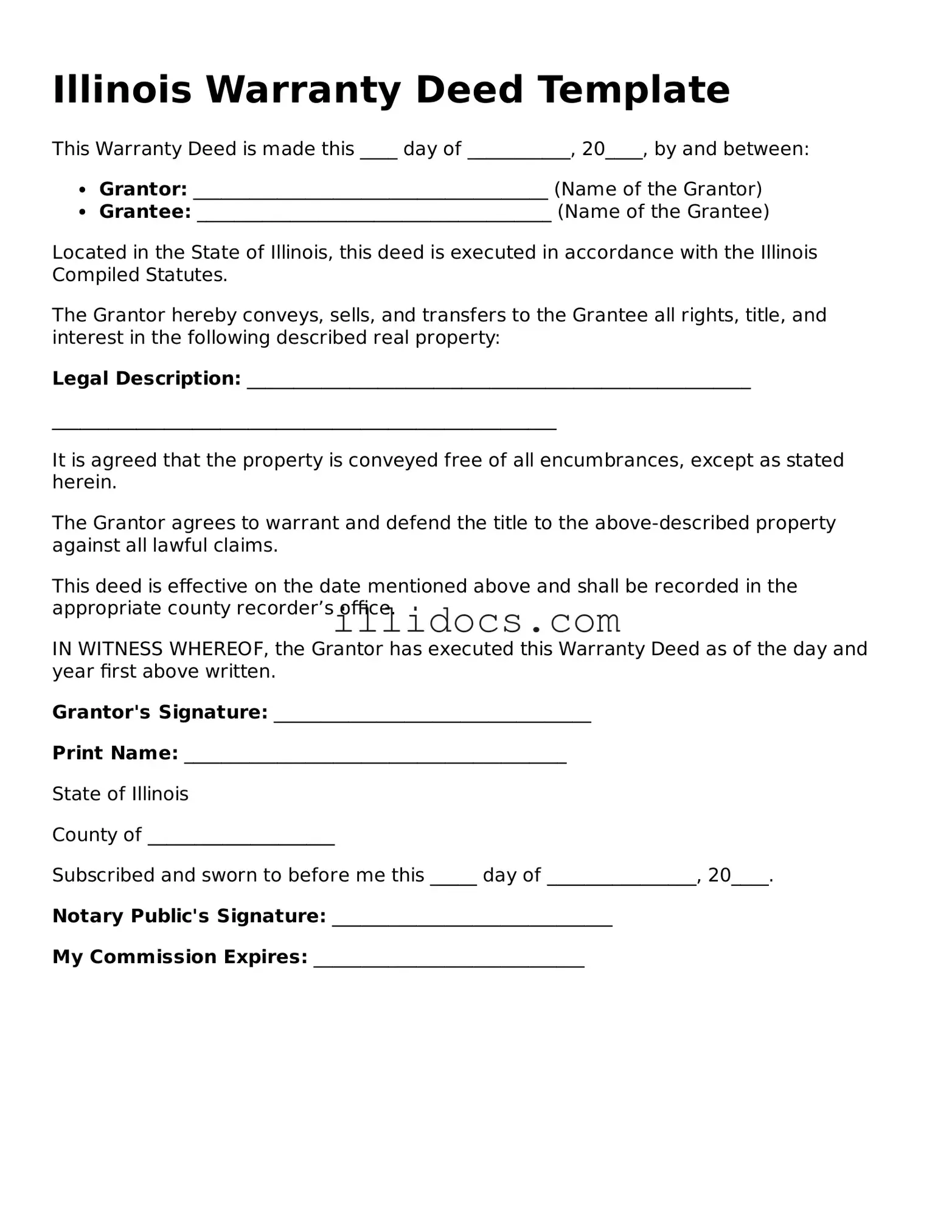What is an Illinois Deed form?
An Illinois Deed form is a legal document used to transfer ownership of real property in the state of Illinois. This form is essential for recording the change of ownership in public records, ensuring that the new owner has clear title to the property. There are different types of deeds, such as warranty deeds and quitclaim deeds, each serving specific purposes in property transactions.
What types of deeds are available in Illinois?
In Illinois, the most common types of deeds include the General Warranty Deed, which provides the highest level of protection to the buyer; the Special Warranty Deed, which limits the seller's liability to claims that arose during their ownership; and the Quitclaim Deed, which transfers whatever interest the seller has in the property without guaranteeing that the title is clear. Each type serves different needs based on the transaction's circumstances.
How do I complete an Illinois Deed form?
To complete an Illinois Deed form, you will need to provide specific information, including the names of the grantor (seller) and grantee (buyer), a legal description of the property, and the date of transfer. It is crucial to ensure that all details are accurate and that the form is signed by the grantor in the presence of a notary public. This helps to validate the document and prevent future disputes.
Do I need a lawyer to prepare an Illinois Deed?
While it is not legally required to have a lawyer prepare an Illinois Deed, consulting with one can be beneficial. A lawyer can help ensure that the deed is completed correctly, advise on the best type of deed for your situation, and assist with any potential legal issues that may arise during the property transfer process.
Where do I file the Illinois Deed form?
Once the Illinois Deed form is completed and notarized, it must be filed with the Recorder of Deeds in the county where the property is located. This filing is important because it officially records the transfer of ownership and protects the rights of the new owner. There may be a filing fee, so it is wise to check with the local Recorder's office for specific requirements.
Are there any taxes associated with transferring property in Illinois?
Yes, transferring property in Illinois may involve several taxes, including the Real Estate Transfer Tax. This tax is typically calculated based on the sale price of the property. Additionally, there may be local transfer taxes depending on the municipality. It is advisable to consult with a tax professional or attorney to understand the full scope of potential tax implications when transferring property.
Can I revoke an Illinois Deed after it has been executed?
Once an Illinois Deed has been executed and recorded, it generally cannot be revoked unilaterally. However, if there are valid grounds, such as fraud or mutual agreement between the parties, it may be possible to challenge or reverse the transaction. Legal advice is recommended in such situations to explore the options available.
What happens if the Illinois Deed is not recorded?
If an Illinois Deed is not recorded, the transfer of ownership may not be recognized by third parties. This can lead to complications, such as disputes over property rights or difficulties in selling the property in the future. Recording the deed is crucial for establishing legal ownership and protecting the interests of the new owner.
